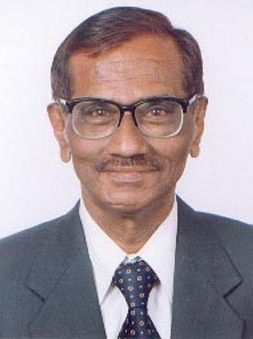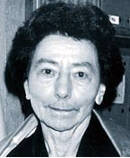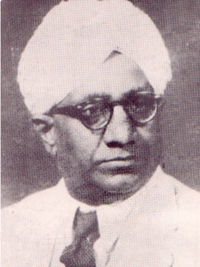The Jains, to whom Asoka had made some donations, speak of having been in favour with his successor at Ujjayini, Samprati (end of the third century B.C.). This king was converted by Suhastin who is considered to have alike evangelized South India. These diverse indications permit to retrace approximately the stage of the Jain expansion. originating from Magadha and the Gangetic plain it could, according to an inscription at Sravana Belgola, have been established at Ujjayini towards the times of Bhadrabahu, whence it gained first Karanataka, then later, in a second wave, the Andhra and Dravida territories. Besides, towards the second century B.C. Jainism is implanted in the east, in Orissa, as indicated by the famous inscription of King Kharavela of Kalinga, on the inner sides of the Hathigumpha cave, at Udayagiri (near the present Bhuvaneswar). The propaganda, on the whole, follows almost the same course as the Buddhist missions. But in contrast to the Buddhist missions it did hardly pass beyond the limits of the Indian sub-continent, and Jainism has never become one of the great religions of humanity.
It is difficult to specify the genuine dates of the expansion of Jainism to the Vindhya Mountains. One hesitates to blindly believe the tradition which places it in the third century B.C. Indeed, the most ancient of the indisputable… archaeological documents do not date back beyond the fifty century. The great propagators of the doctrine have taught there, it appears, towards the eighth century A.D., the logician Samantabhadra (whom the Jains place wrongly, it seems, in the first century), Pujyapada, and another logician Akalanka.
It is certain that the Deccan and South India had become an important Digambara home, the rich and powerful community of which was dealt with tactfully by the princes. After the fifty century, it was divided into four principle groups, which distinguished themselves by certain customs. These are the Kastha-samgha, the Mula-samgha (itself issuing from the fusion of four earlier Samghas) the Mathura-samgha, the Yapaniya-samgha, which appear to have been important. In the fifty century one marks out a Dravida-samgha. In the seventh century, the prosperity of the Jains was established at Kanchi, capital of the Pallavas. This astonished the Chinese pilgrim Hiuntsang. It is in the Kannada country, however, that their implantation has been particularly firm and durable. It is certain that, up till the twelfth century (and despite some sporadic opposition) their economic, social and cultural role was most brilliant. They claimed the conversion of numerous princes and dignitaries, not without some exaggeration; but it is true that they benefited from the tolerance and the support of the diverse dynasties; the Ganga, the Rashtrakuta (capital Morkhand, in the Western Ghat, near Nasik; then Malkhed, to the west of Hyderabad), the western Chalukya (at Badami) and the eastern Chalukya (at Vengi),
The Kalachurya of Kalyani, the Hoysala (Halebid). Several kings of this last dynasty were Jains and almost all, till the fall of the dynasty in the fourteenth century, had manifested a great benevolence towards the community.
Some of the Rashtrakutas were devoted to Jainism; the most brilliant one, Amoghavarsa(A.D. 815-877) who is the author of a Jain treatise and whose reign marks the apogee of the Southern Jainism; the last one who fasted unto death (A.D. 982). Finally, the whole of Karnataka is covered with the numerous monuments, pillars, temples (modern bastis), sanctuaries laid out in the natural caves, which have been sculpted remarkably. Almost everywhere, kings have encouraged the Jain scholars, among others the poets Jinasena and Gunabhadra (under Amoghavarsa). Quite early the savants composed systematic précis, doctrinal compendiums which are authoritative in the opinion of the Digambaras. The most ancient and the most revered masters are Vattakera, Kundakunda (before the seventh century), to whom the Digambaras and Umasvati, whom the Svetambaras claim alike, not without reasons; one may ask whether the two sects do not refer to two namesakes?
The spiritual centre of the Digambaras is at Sravana Belgola (a hundred kilometers to the west of Bangalore, in Mysore), where, according to their belief, Bhadrabahu and Chandragupta withdrew and undertook sallekhana, as is shown by the bas-reliefs of one of the temples erected on the site. It is in this place, at the summit of an airy height that towards A.D. 980 was erected the colossal statue of Bahubali (mythological personage), which dominates the whole of the surrounding. Several replicas, ancient and modern have been built elsewhere.
The decline of the Digambaras dates from the eleventh to twelfth century: it followed the disappearance of Rashtrakutas and the defeat of the Ganges by the Cholas, who oppressed the commercial classes. It was aggravated in the fourteenth century, with the disappearance of the Hoysalas. It was besides, precipitated by the revival of Hinduism. Up till the tenth century, the Jain dialecticians had brilliantly waged controversy with their Brahman and Buddhist adversaries. But towards this age the Hindu religious sects, Vaisnava and Saiva progressed considerably in southern India. They encroached upon Jainism: since the tenth century in the Tamil region; from the second half of the twelfth century in the Kannada country. The propaganda of Ramanuja brought about the conversion to Vaisnavism of Hoysala princes; that of Virasaivas (or lingayats) launched bloody violence, comparable to that which the Muslims in the North caused the Svetambaras to go through towards the thirteenth century. Ever since then, the Digambaras went into hiding and endeavored not to make themselves conspicuous. Forming a small minority, they continue to exist to our day, particularly in Karnataka where the majority of the Jains are agriculturists.
It is difficult to follow the history of the Jains in the north of India, as many of the testimonies are discontinuous and have become tinged with supernatural. On the whole the Svetambara sect remains obscure up till the seventh century, and it does not appear to have crossed the Tapti till the eighth century.
It is remembered that, towards the second century B.C., Jainism had gained Orissa. But it is in the West principally, that it had a remarkable growth.
An important center has existed at Mathura were, among other things; numerous inscriptions have been discovered which date from the second century B.C. to the fifth century A.D. They attest that, in the second century, the Svetambaras had already divided themselves into several groups, with their sub-divisions in ‘families’ (kula) and spiritual ‘branches’ (sakha). At the end of the fifth century A.D., Mathura became the seat of a Svetambara council presided by Skandila.
Tradition places the implantation of Jainism in the Malva region in the third century B.C., at the time when the town if Ujjayini was the capital of Maurya Samprati. To this city is attached the legend, which appears to have been very popular, about Kalaka, a Jain master who lived towards the beginning of the first century B.C. According to the story, he had flown as a refugee to the Sakas (who had just settled at the mouth of the Indus), and he had encouraged them to dislodge from Ujjayini the impious Gardabhila. They reigned there for a little time worthily honouring the religions. Their successors, designated by the names of Vikramaditya and Salivahana, are also reputed, to have been devoted to the doctrine of Jainism. The Jains, indeed, employ the Vikram Era which begins in 56 B.C. Among the kings converted to their religion, they also count, the Hephatalite King Tormana whose son, however, persecuted them (sixth century); as well as Munja (tenth century) and Bhoja (eleventh century) of Dhara, finally Akbar (sixteenth century). Although they exaggerate the sympathy shown to them by the monarchs, they were certainly benefited by the benevolence of the three last kings and the liberal tolerance of Harsa of Thanesar (seventh century). Thanks to these patronages, the Jains had been able to manifest their zeal in founding numerous sanctuaries and monuments; many are extant even today, across the whole of northern India, from Khajuraho to Gwalior in Madhya Pradesh, in Jaisalmer and at Mount Abu in northern and western
Rajasthan.
Further to the west, Gujarat appears to have sheltered well organized communities. It is there, in fact, at Valabhi, in the peninsula of Kathiawar, that, in the second half of the fifth century, assembled together the two Svetambara councils, the first under the presidentship of Nagarjuna, the second, directed by the master Devarddhi (of the spiritual lineage of Nagarjuna). At that time, as well as in the third century B.C., the Jains understood the necessity of guarding the Doctrine against the hazards of a somewhat anarchic transmission. They met finally to determine it: they reassembled, put in order and completed the texts of the existing fragments, thus constituting the Svetambara canon. One has noted that the first council of Valabhi had undoubtedly less renown than that of Mathura. For, in case of a variation, Devarddhi retains the reading of Skandlia in the text (and mentions that of Nagarjuna as a simple variant). The work accomplished by the second council of Valabhi had far-reaching consequences; Devarddhi caused copies of the sacred texts to be reproduced and distributed; on the whole, this edition has been authoritative and has been transmitted since that time.
The Jains cherish the remembrance of the protection which the dynasties of Valabhi according to them during the sixth and eighth centuries. Under the first Chalukya of Gujarat, the faithful laity built temples. But it is during the eleventh and twelfth centuries that the power of the Jains was at its zenith when the master Hemacandra, extraordinarily erudite, was honoured by the King of Gujarat, Jayasimha Siddaraja and, afterwards, when he converted and counseled this monarch’s grand nephew and successor Kumarapala. From A.D. 1160, endeavored to establish a Jain state. He tried, accordingly, to propagate non- violence, compassion and charity (ahimsa); he prohibited by law the slaughter and hunting of animals, the consumption of meat and alcohol, games of dice and betting; and he appointed officials specially charged with watching these arrangements. Kumarapala, besides, abolished the custom which prevailed at that time in Gujarat, by virtue of which the property left by merchants, deceased without issues, was confiscated by the king without going to their widows: a measure which gravely harmed the interests of the Jains. Finally, he naturally built temples (one of which in his capital Anhilvad-Pattana), and respected the Jain creed equally with the Brahmanic creeds. It is notable, that despite his conversion, he did not withdraw his support to the Saivas who, at his death, regained influence. He died, like Hemacandra, and little after him, by fasting unto death, religiously.
Under the Vaghelas, during the thirteen century, the ministers Vastupala and Tejapala built the temples on Mount Abu and at holy places of Gujarat moreover, the Jain influence always remained alive and, at present, this country is, in Western India, a vegetarian region par excellence.
The Svetambara community has been divided in numerous ‘orders’ (gaccha a term which has replaced gana) and ‘branches’ (sakha). There were eighty-four gacchas of which a few only have been durable and important. They are controlled by the Suris who themselves appoint their own successors. The spiritual genealogies are recorded in the pattavalis. They are supposed to have been constituted by the disciples of Udyotana (beginning of the tenth century): in other words, it is after this date that the majority among them were founded. Some enjoy a grand prestige. At the beginning of the eleventh Century appeared the Kharatara-gaccha, which bears the surname given to one of the members, Jinesvara, after he had fought with great energy against the custom prevailing among certain monks to take their quarter in the temples. This gaccha is today moreover very prestigious, as is also the Tapa-gaccha, order of Jagacchandra, a dialectician and reformer of the beginning of the thirteenth century, who was noted for his ascetic fasts. Its members are recognized by the presence of the element vijaya in their name. It is one of them, the famous Hiravijaya, called ‘the master of the world,’ who presented the Jain religion in the court of Akbar, at Fatehpur Sikri, he quit the court in 1584: three of his co-religionists succeeded him.
Thus, certain gacchas were apparently given to the task of combating against the laxity of the religious customs of the majority of the monks.
The Jain tradition registers other movements of contestation generally without grave consequence. Beyond the great secession of A.D. 79, it mentions seven minor schisms. The first is owing to Jamali, son-in law and nephew of Mahavira, and it darkened the last days of the Prophet. Equally animated by the care for purity and orthodoxy, are other Jains, though linked with the Svetambaras, grouped in sects. Sometimes, they separated themselves from the majority on question of doctrine. In general, the opposition mostly concerns particulars of the practice. At the beginning of the twelfth century, the paurnamayikas insisted strongly on the importance of confession on the day of full moon (purnima). About a century later, the agamikas, faithful to the canonic texts, refused to adore the Srutadevata, or the divinity which symbolizes the precept of the Prophet. In the middle of the fifteenth century, the Vasadharas of Rajputana and Gujarat distinguished themselves by wearing remarkable dresses. They are connected to the Lumpakas (or Lonkas) who, a little before, were grouped around a merchant of Ahmedabad so named: neither he now they admitted the cult of the Jains’ representations for the reason (erroneous) that it is not mentioned in the canonic treatises. This view is taken up again by the important sect of the Sthanakvasis, which appeared at Surat in the middle of the seventeenth century. Accordingly, they tolerate the cult only in profane places (sthanaka). They are likewise known under the name of dhundliya or dhundlak, ‘who seek’ in the scriptures, and Bavis (vis) Tole Panth, the ‘way of twenty-two groups.’ Although connected expressly with the Svetambaras, they reject thirteen of the forty-five treatises commonly held as canonic. It is very remarkable that Sthanakvasis denounce as apocryphal precisely those treatises, which the historical criticism has, on other grounds, shown to be the most recent.
In the middle of the eighteenth century, a former Sthanakvasis, in Marwar, founded the equally puritan sect of the Terapanthis, or followers ‘ of the way thirteen,’ which also rejects the cult of the icons and encourages the active study of the sources of religion. Very probably therefore, this sect, although formed in a relatively late epoch, has taken up and preserved a considerably older tradition.
Men of letters have been neither less numerous nor less fecund among the Svetambaras than among the Digambaras: philosophers (Umasvati, of uncertain date), commentators of canonic treatises (Silanka, of the ninth century A.D.), Abhayadeva and Malayagiri (twelfth century A.D.). The greatest names are those of Haribhadra (eighth century A.D.), whose genius is supple and varied, Hemacandra (A.D. 1089-1172), who is remarkably gifted and who, patronized by the kings of Gujarat, prepares for this country a synthesis of the Jain culture.
Moreover, the whole Jain community always and everywhere, displays an intense literary activity, which is manifested in all the spheres. One should mention, not only Jain dogmatic and dialectical treatises, didactic collections, commentaries on sacred and profane works (Jain and others), but also scientific contributions, whether concerning grammar, lexicography, poetics, metrics, or polities, medicine, etc. The Jains have excelled in the narrative genre which they have cultivated with preference, they have composed satirical pamphlets and, naturally, hymns in great number. To the needs of their beliefs, apologetics and hagiology, they adapt the cycle of the puranasand of the Hindu epics (Mahabharata, Harivamsa, and above all, Ramayana, without neglecting the Brhatkatha) creating the particular genre of the ‘universal history’ and the legendary biographies of their ‘great men’.
In their works they utilize the diverse literary languages of India, the Digambaras not shrinking from employing the Dravidian idioms (Tamil and above all Kannada)- perhaps, one thought, by opposition to Brahminism, who preferred Sanskrit. The Indo-Aryan medium (Prakrit first of all, then later, Apabhramsa) serves abundantly, while the usage of Sanskrit(old Indo Aryan) is relatively late. Yet, it is constant in the philosophical works and the commentaries after Umasvati and Haribhadra (who is Brahman by birth). From early middle age the Jains have sometimes recourse to do Indo-Aryan vernacular languages.
They continue to be very active today: they encourage erudite works and, on the other hand, make endeavours of propaganda in which the members of the liberal professions, relatively numerous in the community, often participate. A universal mission has been created at Aliganji- Etah (U.P.) in A.D. 1949 and it presently publishes numerous reviews, pamphlets and brochures. The financing of the publications of certain learned institutions, of many religious foundations, and finally all sorts of deeds of solidarity are generally assured by the laity, many of whom, above all among the Svetambaras, handle important commercial and industrial business. Briefly, the present core of the Jains endeavours to be faithful to the Doctrine and to the community.
 Bal Patil
Bal Patil
 Prof Dr. Colette Caillat
Prof Dr. Colette Caillat
 Prof. Dr. Adinath Neminath Upadhye
Prof. Dr. Adinath Neminath Upadhye
